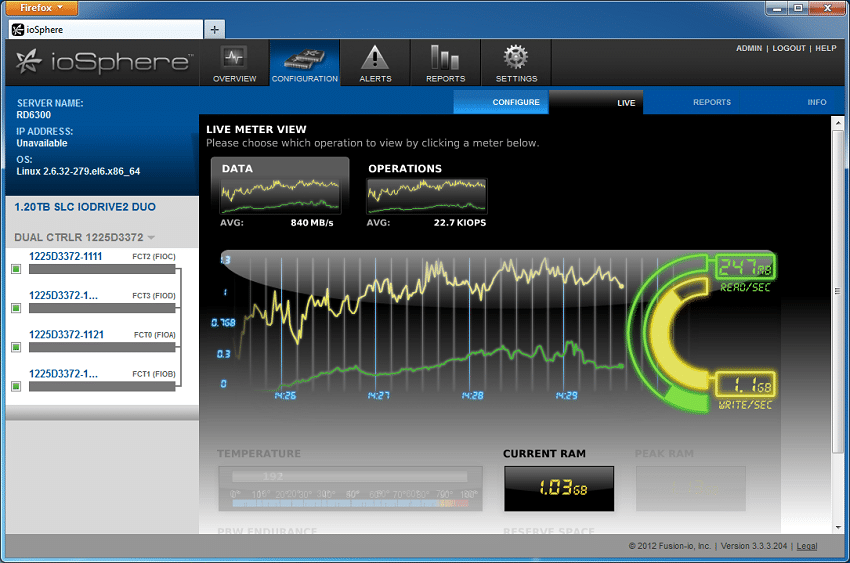As a prequel to my upcoming FusionIO performance benchmarking articles I thought I would quickly demonstrate how easy it is to install the FusionIO drivers for VMware ESXi.
Navigate to C:WindowsSystem32configsystemprofileAppData. Delete the fio and fio-logs folders if present. Navigate to Device Manager. Uninstall any Fusion IO drivers under storage or disk drives. Download and install latest VSL driver first. Download and install latest version of ioSphere. Open ioSphere and confirm that the card is. Follow the instructions based on the version of your driver. Building the Fusion-io Drivers From Source. To view a step-by-step screencast of this process, click here. Before beginning, download the ioDrive driver source rpm for RHEL from the Dell Fusion-io support site to a temporary directory. At minimum, you’ll need the latest version of. Fujitsu Support and Downloads- Notebooks, Tablet PCs, Scanners, Servers, Storage, Ethernet Switches, Communications Networks, Retail POS Systems, Touch Panels.
First you need to download the drivers from https://support.fusionio.com/downloads , you will need to register to access the support website.
Once you login you need to click the Downloads button and you will see the “Identify Product” section appear similar to the below. Select “IODrive2” , The suitable VMware ESXi version, and for option 3, the latest version.
Then you should see the below available downloads.
The file you need is the “Fusion-IO_libvsl-offline-bundle-%version%” file which is under “Utilities”.
Download the file and extract the zip file, and you should see similar to the below.
Now we need to either copy the vib file to a datastore OR use something like WinSCP to copy the file to the host.
The easiest way in my opinion is to copy the file to a datastore via vSphere client.
To do this, goto the “configuration” tab for your ESXi host/s , select “storage” under the “Hardware” section, then select your datastore.
Now right click the datastore and select “Browse Datastore”
Once in your datastore, click this icon and you will see the below appear.
Select the VIB file and press “Open”
The file should now upload, and you will see a progress window like the below.
Once the file is in your datastore, make note of the path assuming you didn’t use the root of the datastore.

Fusion Io Windows 10 Driver

Fusion-io Driver
Now click “Security Profile” under the “Software” section (see below).
Now click “Properties” for the “Firewall” and you will see the below appear.
Ensure “SSH Server” is ticked like the above and press Ok.
Your now ready to SSH to your ESXi host using a program such as PuTTY.
Open PuTTY, enter the IP or hostname for your ESXi host, select SSH (Port 22) and press Connect.
You will be prompted for credentials, I am using “root” in this example.
After entering your credentials, you should see the below screen.
Now we use “esxcli” to install the VIB by using the following command
“esxcli software vib install -v /vmfs/volumes/*DATASTORENAME*/Fusionio_bootbank_block-iomemory-vsl_3.1.5.126-1OEM.500.0.0.472560.vib”
Once Installed, you should see something similar to the below.
Now to verify the driver has installed, we can use the “esxcli software vib list” command which should give us a result similar to the below.
Now if the driver appears like the above, reboot your host.
Once you have rebooted, SSH back to your host, and we now need to format the FusionIO card.
To do this use the below command.
Now you should be able to open the vSphere client, select your host and goto the configuration tab, Select “Storage Adapters” and you should see the FusionIO card show up like the below.
/driver-booster-8-3c1a0c35ba4748fdbcc1f60ed63ae576.png)
Fusion-io Driver Download For Windows 10 64-bit
Now you can return to the “Storage” menu and use “add Storage” too format the card with VMFS.
Paper Io Download Windows 10

Now your ready to use your FusionIO card.
Fusion-io Driver Download For Windows 10 32-bit
I recently bought a Fusion-IO SSD for cheap and have trouble getting it to work on OpenSUSE Leap 15.1, kernel 4.12.14-lp151.28.13-default
The card is an SX300-6400.
Since there are no factory drivers available, I used and followed the instructions here: https://github.com/snuf/iomemory-vsl
Compiling the 3 driver packages using
went without a hitch. I then installed them along with the additional fio-utils from https://link.westerndigital.com/ente...-download.html (seems to be down at the moment)
I then continued with the guide using
Each command seemed to work, at least I did not get any obvious error messages.
But when I try probing the drive using fio-status, I still get
I know the drive can be recognized in this workstation, because I tried it on a Windows install.
Is there something in the procedure that needs to be changed for OpenSUSE? Or anything I need to do in addition to that? I'm a bit lost, since I never had to install drivers this way.
